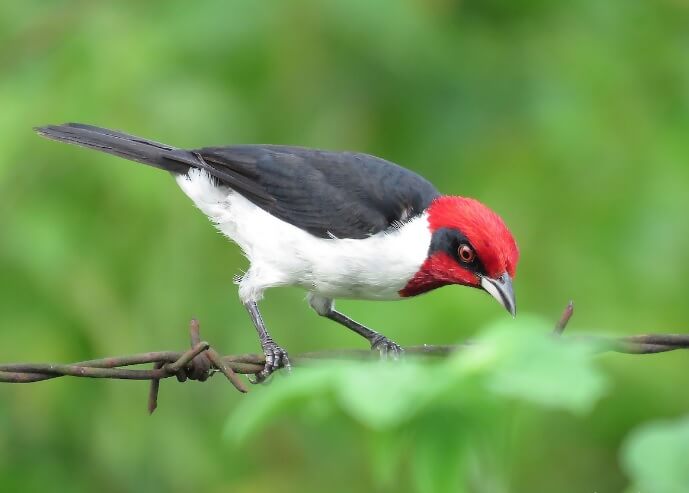Get Mesmerized By The Black-N-White Coat And Red Head Of This Masked Cardinal
This unmistakable tricolored bird, with bold red, black, and white patches, is so adorable that it makes you fix your eyes on it. Let's say hi to Masked Cardinal and discover something interesting about this species! In addition to introducing its diet, habit, and several biological facts, we love to show a few charming images of individuals from the species.
 Source: Jason Fidorra/Caroni Swamp, San Juan-Laventille, Trinidad and Tobago
Source: Jason Fidorra/Caroni Swamp, San Juan-Laventille, Trinidad and Tobago
 Source: Margaret Sloan/Caroni Swamp and Preserve, Trinidad, Tunapuna-Piarco, Trinidad and Tobago
Source: Margaret Sloan/Caroni Swamp and Preserve, Trinidad, Tunapuna-Piarco, Trinidad and Tobago
 Source: Jerome Foster/Aranguez - Farmlands by Overpass, San Juan-Laventille, Trinidad and Tobago
Source: Jerome Foster/Aranguez - Farmlands by Overpass, San Juan-Laventille, Trinidad and Tobago
 Source: Timo Mitzen/Goldfish Ponds; Meta, Colombia, Meta, Colombia
Source: Timo Mitzen/Goldfish Ponds; Meta, Colombia, Meta, Colombia
 Source: Jhon Velasquez/Parque Arawana, Meta, Colombia
Source: Jhon Velasquez/Parque Arawana, Meta, Colombia
 Source: Luis R Figueroa/Hato El Cedral, Apure, Venezuela
Source: Luis R Figueroa/Hato El Cedral, Apure, Venezuela
 Source: Amilcar Lusinchi
Source: Amilcar Lusinchi
Share this article
Advertisement